|
Radschool Association Magazine - Vol 23 Page 13 |
|
Girls rule!!
The US 376th Expeditionary Air Refuelling Squadron, recently flew an ALL FEMALE KC-135 Stratotanker air refuelling mission over Afghanistan. The aircraft took off from Ganci Air Base, Kyrgyzstan, carrying more than 180,000 pounds of fuel with an all-female crew, both pilots, a navigator and a boom operator.
The event marked the first all-female crew to fly an air refuelling mission into Afghanistan from Ganci. Capt. Heather, and the boom operator, Senior Airman Lyndi, are all assigned to the 99th Air Refuelling Squadron at Robins Air Force Base, Ga.
|
|
The photo (right) was sent to us by Kev Rosser and was taken at East Sale in 1970. The bods are:
Rear (L-R) Bob Campbell, Kev Rosser, John Parker.
Front (L-R) Ron Carter, The WO, Otto (Mad Dog) Fahey, Jeff Cuff. |
|
|
|
Ted Washbrook, who lives over in the West, says he saw Tom McIntyre (left) the other week. Tom made the trek across the Nullarbor from Queensland and was running in the annual International Hash Run (21-23 March) and as Ted says, “would you believe it, he runs in a kilt made from the McIntyre Hunting Tartan.”
(AH!!! - But the big question Ted is:– what does he wear underneath it?? – tb) |
|
|
|
|
Butterworth
Dick Harcourt, who was with the RAF at Butterworth has sent us some photos taken during his stay up there. These are sure to bring back memories for a bunch of blokes who went through Butterworth while it was a much sought after posting. If you’ve got any photos you would like to share with us, please send them in.
|
|
|
|
|
|
Peter Ellis of the RAF and Cecilia Bocos. |
|
|
|
Butterworth ferry terminal |
|
|
|
Penang swimming club. |
|
|
|
Mirages
|
|
Mt Erskine Reservoir. |
|
|
|
Butterworth Transmitters |
|
|
|
AND!!!! If you really want a trip down nostalgia lane ……….. Kev Cragg was a groundy and used his tape recorder to tape a few minutes of Radio Mouth – have a listen to THIS.
|
|
Allan George tells the story about a certain Flt Looey he knew (no names, no pack drill) who was an AEO (Orion back-ender) but who wanted to become an engineer because he suffered from chronic air sickness. Allan asked him how he managed his flying and air sickness and the Flt Looey said his strategy was to eat a bar of chocolate before going flying. He reckons it didn’t help the air sickness, but it sure made things taste a damn site better on the way back up!!!
|
|
Wine
If you like a drop of good wine at a realistic price, try this SITE. The wines are excellent (a lot are clean skins), are delivered to your door by Australia Post and are sold at a realistic price.
|
|
RAAF Ubon,
Ubon, Thailand – National Reunion
The RAAF Ubon, Thailand Group (WA) will host the national reunion in Perth during 22-24 August 2008.
An invitation is extended to all ex-RAAF members of 79 Squadron, Base Squadron and No 5 Airfield Construction Squadron who served at Ubon from 1962 to 1968.
Expressions of interest are sought now.
Contact: Vic Carbone. Phone (08) 9343-1235 Email: carbs@iinet.net.au
|
|
RAF Penang-Butterworth Reunion
The “To-and-Froms“ held a Penang-Butterworth reunion over the weekend 10 -11 May 2008.
The old shack in the background is the Ramada Hotel, Bingley in North Yorkshire, just south west of the Yorkshire Dales. The original part of the hotel was a large country house, now with two large extensions to each side. It almost certainly originally belonged to a wealthy wool merchant from nearby Bradford or Leeds. This year’s RAF Butterworth and Penang Association Reunion and AGM was held there.
Dick Harcourt sent us the photo, (that’s him extreme right) and he says we try and move around every few years, so having moved from Birmingham two years ago, next year we are moving the Reunion to a hotel at Kenilworth, near Warwich in Shakespeare Country.
He says they had a good Reunion again this year with increased attendance, so bodes well for the future. Dick says he couldn’t make it to Malaysia for the RAAF Butterworth 50th Celebrations, but one of his mates who lives on Penang had arranged to attend and represent the Association and the RAF on our behalf. I have just received this email from him:-
I have to offer my apologies to the Association as I was not able to get to the Parade which should have been held at Butterworth last night. I say should because, at this time, I was unable to confirm if it did go ahead. From lunchtime on yesterday, we had some of the worst weather that we have had here in a long time.
However, that was not the reason why I was unable to get to Butterworth. That reason was traffic!! I allowed myself over 2 hours to make a journey that usually takes just less than half that time. Although I expected quite a bit of traffic, I thought that time would be adequate. Wrong! Had I allowed double that time, I might, just, have made it. But even that is doubtful.
I usually take the ferry
which, for me, is the easier option. The queue for that started almost at
the Fort. Having seen that and knowing that it would take at least an
hour plus to get on the ferry, I headed for the bridge. With the new
coastal highway starting just below the Clan Piers near the
On Monday, I will contact Flt Lt Carter and see how things went. I am wondering if all the visitors for the festivities also made the parade. They were all in hotels on the island and would have faced similar problems.
Dick says needless to say he didn't make it! His comment about visitors refers to the large number of ex RAAF and Serving RAAF who were due to attend and were all booked into hotels on Penang Island and must have suffered the same problems unless the RAAF had arranged an alternative sea route from Batu Ferringah to the Boatie Club?
|
|
RAAF School Penang.
Steve Ellis has asked us to let you know that there is a 50th Anniversary Reunion being organised for the RAAF School Penang to be held in Canberra on 1st and 2nd November this year. For more info on this reunion, click HERE
|
|
Music.
The way music
is stored and played has changed considerably during our life-time. Most
of us can remember
In 1948 Columbia Records developed and introduced the "microgroove" record which was made of vinyl and which played at 33. RPM instead of 78 RPM as did the old shellac records. Then in 1949, RCA Victor released the first 45 rpm single. With these "new" cheap to produce records on the market, manufacturers very quickly geared up and record players of hugely different varieties began to hit the shops. There were inexpensive little ‘portable’ units to large wooden units that were a piece of furniture and which dominated one’s lounge room. However, these "new" records only provided mono sound, and it wasn’t until 1958 that Audio Fidelity in the USA and Pye in the UK released the first "Stereo" records and this is when things really began to change.
Stereo records were produced of trains rushing along tracks, aircraft taking off, animals screeching, cars racing, people speaking, anything that demonstrated the stereo sound was recorded and snapped up by an amazed public. ( I think in my old collection I still have a record titled "Dot stereo sampler" - tb).
With the ‘new’ and better sound came the demand for better equipment on which to play it. The idea of the record player, amplifier and speaker all being in the one unit went by the way as different manufacturers specialised in individual components. Companies began to produce better record players, or turn-tables as they were now called. Costlier turntables were made from heavy aluminium castings with heaps of mass and inertia and this helped to minimize vibration and maintain a constant speed without "wow or flutter". They usually employed ball bearings or roller bearings in the spindle to reduce friction and noise. Most were belt or direct drive, but some used an idler wheel.
The Swiss "Lenco" drive (right), ( many a bloke bought the L75 from the Yankee PX shops in Vietnam - tb) had a very heavy turntable coupled via an idler wheel to a long, tapered motor drive shaft. Many platters had a continuous series of strobe markings machined or printed around their edge to show that the thing was turning at the correct speed. Some had anti-skate weights built into the tone arm, though whether they did any good is debatable. Then there was the huge variety of ‘needles’ one could buy, from the basic crystal needle to the hugely expensive magnetic cartridge.
Reel to Reel tape recorders had been around for a while but in the late 60’s these flourished as better quality tape and much better circuitry allowed true Hi-Fi recording. The little cassette tape, which had been a novelty item during the 60’s and early 70’s also got a leg up as quality of sound increased, due mainly to a bloke named Ray Dolby and eventually it replaced the reel to reel. Cassette players sprang up everywhere, there were elaborate home units, portable units and any car worth having was built with an in-dash cassette player.
In 1979,
Philips and Sony joined forces to produce the CD and music went from a
series of peaks and
About 10 years ago, the first few MP3 players were released, and this started the eventual decline of the purchased CD. Today, the music landscape has changed again as online music downloads has become a way of life for many of us. No longer is it necessary to buy a whole CD which everyone knows usually contains one or perhaps 2 good tunes with 16 or so "also rans". Today we just ‘buy’ the track we want, store the music onto a portable MP3 player or computer and play it.
No longer is it necessary to have record or cassette or CD collections. Today many thousands of songs can be stored, sorted and played on a device no large than a packet of cigarettes. It seems that every 10 years or so, the whole music scene changes – we can only wonder what is in store for us 10 years from now…….
|
|
Stonehenge?
Peter Forster sent us this, and you have to see it.
Wally Wallington has demonstrated that he can lift a Stonehenge-sized pillar weighing 10,000kgs. What makes this so special is that he does it using only himself, gravity, and his incredible ingenuity. He shows how simple and easy it would have been to create Stonehenge.
|
|
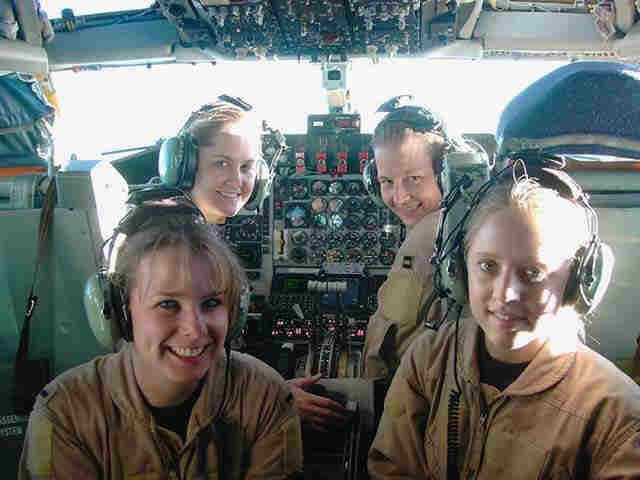
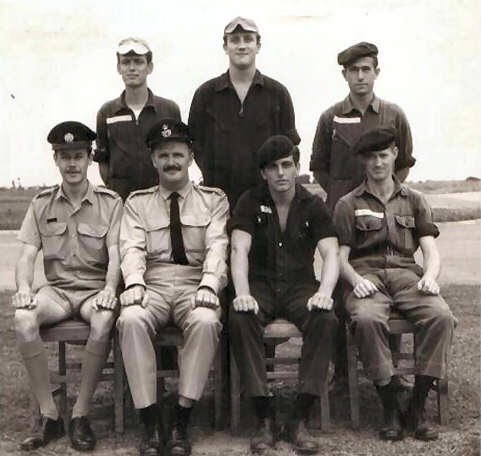
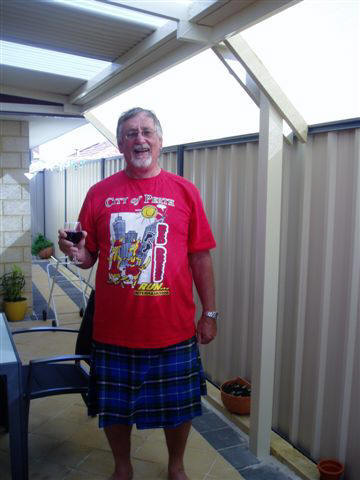
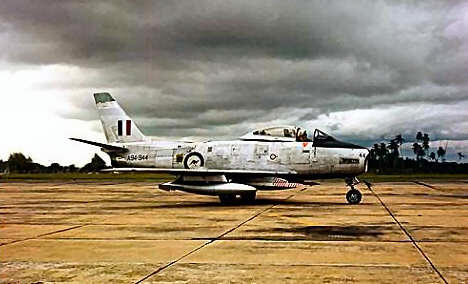
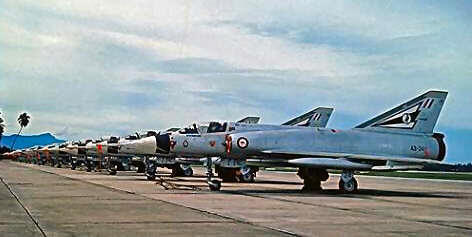

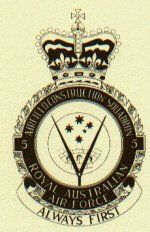
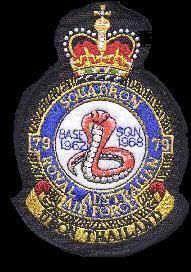
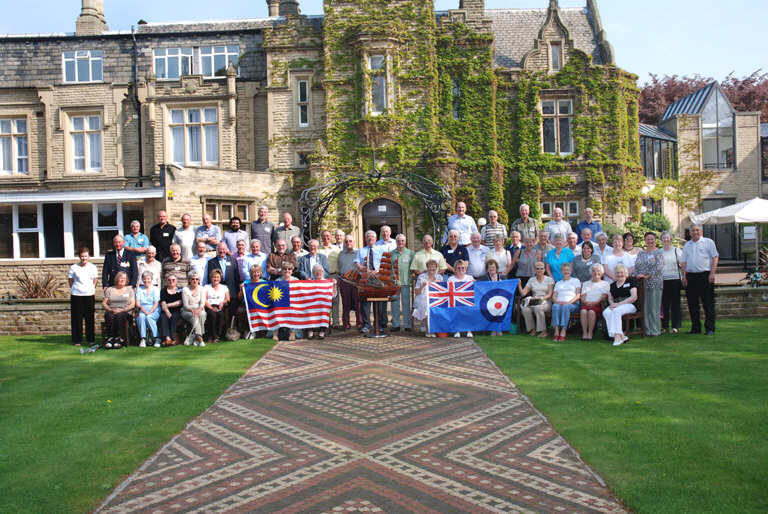


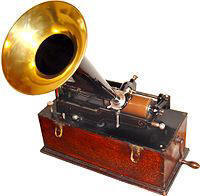 the days when the only way you could listen to music was to hear it live
or to listen to it over the radio. There were cylinders and records of
course for private use, but not every home could afford either the player
or the cylinders/records. It’s interesting to note that the quality of
music produced by the old cylinders was equal to or better than that
produced by the disc. Recordings made on a cylinder remain at a constant
linear velocity for the entirety of the recording, while those made on a
disc have a higher linear velocity at the outer portion of the groove
compared to the inner portion
the days when the only way you could listen to music was to hear it live
or to listen to it over the radio. There were cylinders and records of
course for private use, but not every home could afford either the player
or the cylinders/records. It’s interesting to note that the quality of
music produced by the old cylinders was equal to or better than that
produced by the disc. Recordings made on a cylinder remain at a constant
linear velocity for the entirety of the recording, while those made on a
disc have a higher linear velocity at the outer portion of the groove
compared to the inner portion 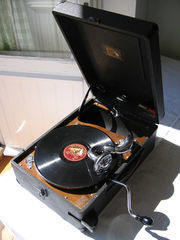 What
swung the balance towards acceptance of the disc over the cylinder was it
could be easily mass produced by moulding and stamping and the disc
recordings required less storage space than did the cylinders. The disc
player also used a heavy cast-iron turntable which acted as a flywheel and
helped maintain a consistent rotational velocity. The cylinder disappeared
in the 1920’s and the "shellac" 78 ruled for quite a while.
What
swung the balance towards acceptance of the disc over the cylinder was it
could be easily mass produced by moulding and stamping and the disc
recordings required less storage space than did the cylinders. The disc
player also used a heavy cast-iron turntable which acted as a flywheel and
helped maintain a consistent rotational velocity. The cylinder disappeared
in the 1920’s and the "shellac" 78 ruled for quite a while.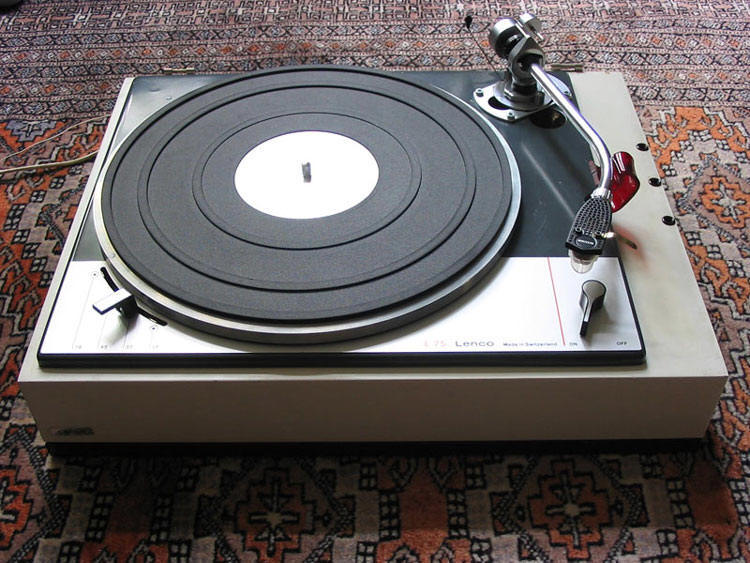
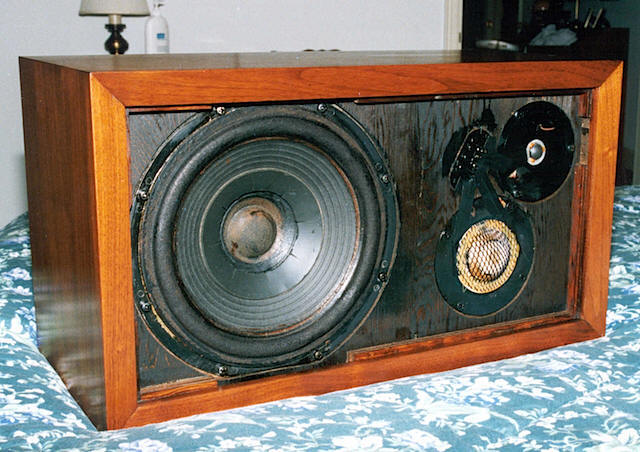 Amplifiers
and speakers changed too. Valve amplifiers went and were replaced by
transistor powered units, these in turn went and were replaced by a tiny
chip. FM tuner amps were introduced and snapped up in their thousands by
the public. Names like Sansui, Kenwood and Pioneer ruled. Electro-magnet
speakers were replaced by permanent magnet speakers (
Amplifiers
and speakers changed too. Valve amplifiers went and were replaced by
transistor powered units, these in turn went and were replaced by a tiny
chip. FM tuner amps were introduced and snapped up in their thousands by
the public. Names like Sansui, Kenwood and Pioneer ruled. Electro-magnet
speakers were replaced by permanent magnet speakers (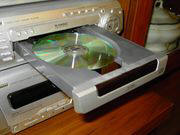 troughs to became a series of zeros and ones and in 1982 (a bare 26 years
ago) the first CD player was marketed and this new concept virtually
killed the record and tape industry overnight. People bought CD’s in their
millions and once again, a whole industry sprang up around them. CD
burners became available during the 90’s, and as the 90’s ended, the thing
to have was a personal CD burner capable of burning at 8 times. Cassette
players were yanked out of cars, and in their place was put the 6 stacker
CD player.
troughs to became a series of zeros and ones and in 1982 (a bare 26 years
ago) the first CD player was marketed and this new concept virtually
killed the record and tape industry overnight. People bought CD’s in their
millions and once again, a whole industry sprang up around them. CD
burners became available during the 90’s, and as the 90’s ended, the thing
to have was a personal CD burner capable of burning at 8 times. Cassette
players were yanked out of cars, and in their place was put the 6 stacker
CD player.